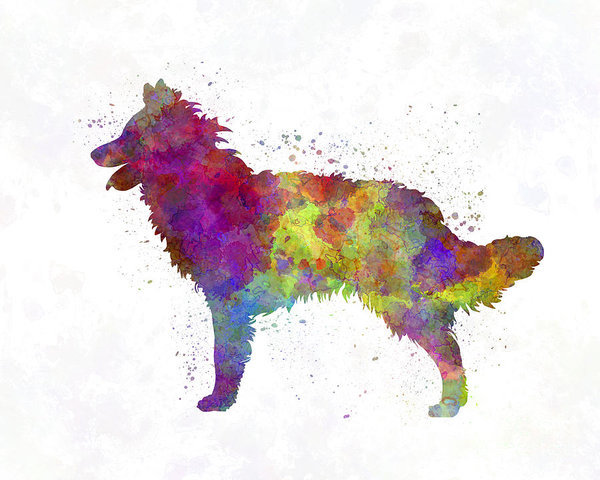
In no particular order, they are fekete, fehér, barna, hamvas, cifra, and fakó, but English speakers will say (in the same order) black, white, brown, gray, black merle and yellow (that is more of a biscuit color). They are all acceptable colors for the Mudi, arguably Hungary’s rarest sheepdog. The Mudi is one of a few breeds in the AKC Herding Group that has the merle color (some believe here are actually three types of merle in the Mudi: Black merle, brown merle, and grey merle), as well as healthy, solid white-colored dogs. Interestingly, early breed standards had as acceptable colors for the Mudi black, or black/white (piebald), and by the time the breed was accepted into the FCI in 1963, acceptable colors were black, white, brown, and ash. Fawn and Cifra were added in 2003.
In 2009, Rózsa Várszegi, Z.S. Posta, and S. Mihók presented a paper at the 60th Annual Meeting of the European Association for Animal Production entitled, The colour inheritance of Pumi and Mudi Hungarian dog breeds.” The abstract shared the results of a study they did on 599 Mudi puppies from 114 litters and found that 2/3 of the dogs were black. You can read this abstract and see a chart on a breakdown of color here.
Fan of the Mudi who are interested in the topic of Mudi colors may want to read a blog that concerns color and breeding in the Klub für Ungarische Hirtenhunde, or German Hungarian breeds club. To pique your curiosity, consider this line taken from the article, “Now the Germans have taken different approach to the issue by limiting the breeding of merle dogs to only black, and any other color (white, fakó, brown, ash) to only black dogs.”
Serious Mudi “nerds” may want to read this abstract:“Detection of the hidden merle colour in Mudi breed with molecular genetic methods.”
Mudi Image by Pablo Romero
http://1-pablo-romero.pixels.com/
www.etsy.com/shop/AnimalArtPosters
www.etsy.com/shop/paulrommer

There are actually a number of herding breeds with merle. What’s interesting is why some have it and others dont. Also, there are different coat types in the herding breeds and it’s interesting to see what reasons there are for that